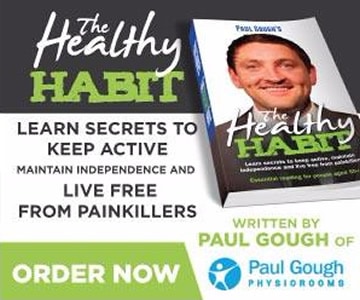
Let’s face it, British Summer this year has been a little on and off. It’s definitely kept me on my toes, and I’ve even had to crank up the heating every now and then!
And while Summer time is usually a great time to get outside and enjoy a bit of a garden make-over or spruce up, it seems that this Summer has been perfect to fit in a bit of home DIY instead.
And because of that, it comes as no surprise that we’ve seen an increase in the number of people coming to the clinic complaining of aches and pains as a result of DIY and ‘summer-clear outs’ this year.
All of that bending down, lifting heavy things, and standing on ladders to get to those difficult to reach places, can put a lot of strain on the body.
And if you’re not used to doing strenuous work around the house for hours, or sometimes all weekend long – then DIY can definitely put pressure on your back, knees, neck and shoulders, resulting in strains, and even injuries if you’re not careful.
It happened to a lady we saw the other week who comes in for regular treatment. She’d been painting all weekend, and when we saw her for her treatment session, she told us that she woke up that morning barely able to move her shoulder and lift her arms because they were so achey, stiff and tight.
Now if that happens to you, you might think the aches will go away in a couple of days or after a day of rest… And sometimes they do! But if you decide to get back to your DIY jobs, and spend another whole day completing them… The likely hood of those aches coming back again is high, and they might just stop you from doing all the other things that you’ve got planned.
And because I don’t want you to put your back out moving the furniture around, get sore knees from kneeling down for too long putting something together, and getting neck and shoulder pain because you’re painting those hard to reach spots all day long – I’ve put together some actionable tips for you – so muscle strains, and unexpected injuries don’t ruin your quality of life.
Let’s get to them:
1. Warm Up Before You Tackle Decorating
Decorating the house and any DIY task that takes up hours and hours, is like any form of exercise, so if you go at it without warming up your muscles first – there’s a high chance you could strain them.
My tip: Take a hot shower before you start your jobs, or go for a brisk walk around the town. That will get your body moving and your circulation going so your muscles will have the blood supply they need to work.
2. Don’t Do Too Much Too Soon
This is a common thing I see in the clinic… People doing too much too soon.
You might have spent the last few months not doing much around the house, then suddenly you’re putting your body through a ‘hardcore’ workout in the form of DIY. So, rather than trying to re-decorate the house in one go, take it easy.
Start with just one hour the first day, take a day off, see how your body feels, then aim for two hours the next day.
When you do too much too soon with anything, you’re likely to feel it, and not in a good way!
3. Don’t Concentrate On One Task For Too Long
If you spend your entire morning painting, your body is likely to complain. Instead do a little of several different jobs that use different muscles and positions. Then the same, a day or two later.
You’ll get the same amount done, but you won’t put too much pressure on one group of muscles. Make sense?
So try twenty minutes of moving furniture around, twenty minutes of painting, twenty minutes of enjoying a cup of tea… You get the gist.
4. Drink Enough
When you get carried away with any task, it’s easy to forget about time, and even forget to take breaks to eat and drink!
Just like I said in my last tip, take regular twenty minute breaks to enjoy a glass of water, cup of tea, or coffee, you’ll be glad you did.
5. Make Sure You’re Working At The Right Height
Invest in an adjustable work bench so you can put it at the right height whatever the job. And make sure the shelves in your greenhouse are at a height that doesn’t require you to bend excessively.
Whether you’re sawing, painting or potting plants, you need whatever you’re working on to be at around hip height. Be aware though, that you may have longer or shorter arms or legs than the average person, so the most important thing is to adjust your work area to suit your task and your body – then you won’t be putting any extra pressure on your body to get the job done.
If you’ve already done too much, and you’re feeling aches and pains, you can download my free back pain guide for actionable tips you can do as soon as today, to start easing those aches and pains. Click here to download it: http://www.paulgoughphysio.com/back-pain
Or, click here:


